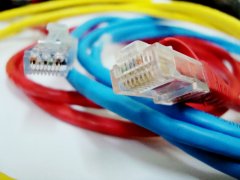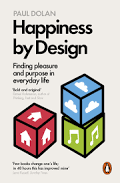 Having just turned 41 years of age, it makes for a good time to reflect a little on the year so far. Firstly I think its important to note that this year appears to be disappearing very fast. I feel at this point as if the Christmas period was only yesterday. I suspect a quick review of past posts will show a similar perception throughout the year. I may be able to draw positive conclusions from this, in that time flies when you are having fun, or negative conclusions in that I am that busy I am unable to stop and truly experience or review the events that have occurred. A third option, and the one I think I will stick with on this occasion, is the that this clearly highlights the frailty of our memories to accurately reflect past events.
Having just turned 41 years of age, it makes for a good time to reflect a little on the year so far. Firstly I think its important to note that this year appears to be disappearing very fast. I feel at this point as if the Christmas period was only yesterday. I suspect a quick review of past posts will show a similar perception throughout the year. I may be able to draw positive conclusions from this, in that time flies when you are having fun, or negative conclusions in that I am that busy I am unable to stop and truly experience or review the events that have occurred. A third option, and the one I think I will stick with on this occasion, is the that this clearly highlights the frailty of our memories to accurately reflect past events.
During the last few months I have taken to journaling to try and keep a record of the things I have done and how I have felt. Sadly this has been a little hit and miss with some weeks consisting of daily records of each day while other weeks have been empty of record. This is something I want to try and be more consistent with and I have been considering that maybe I will need to reduce my blogging in order to release time to facilitate this. Given that one of the reasons for blogging is to have personal records of my thinking, which is the same reason for having a journal, this trade off seems logical. As such this may represent the last of my blogs for a little while at least.
I found the recent Secret Teacher article in relation to English teachers not reading quite interesting given that I had set one of my targets or pledges to be reading at least 1 book per month. I continue to progress well on this target with the hope that I will continue to do so. I am finding the act of reading to be relaxing but also thought provoking as I explore subjects such as stoicism, culture and also how we think. The Secret Teacher article strikes me as representing gross generalisation, which is often a feature of online educational discussion, although generally this is backed up by some research.
The area of fitness continues to be one of my weak areas. Still I am unable to keep up more than a sporadic attempt at physical exercise. As I have repeatedly said before this is an area which I need to continue to work at. I am starting to wonder whether the issue here is that I am basing my targets on what other people do while my aspirations should clearly be much lower. A quick glance at twitter highlights various teaching colleagues across the world who have engaged in their daily or weekly run. Am afraid the best I can hope for is a monthly or yearly doddle. Maybe the fact that it is in my mind and therefore I am making sporadic attempts is the best I can hope for. I suppose I can also be positive in that I have played an hour or so of football with my son on the last three nights. Progress is progress, even if it is little and infrequent!
My connectedness is another area which is giving me similar thoughts to the above. I feel that I should be doing more in terms or writing blog pieces, contributing to twitter chats, contributing to publications, etc. Now again this may be comparisons with others who appear to be doing more. Again, twitter and other social media seems to present us with models to follow however I am increasingly wondering if these are the right aspirations. Are the few education stars on social media distorting what I perceive as normal expectations or more accurately my expectations? These stars are a very small percentage of the overall educational body of individuals across the world yet they are very public and visible. If plotted on a graph of connectedness they would be outliers, being significantly more connected and active than most, however this has an effect of significantly changing the average connectedness. Take them out of the equation and the average would be significantly lower. In addition to this there is the psychological factor in that they are very public and therefore come easily to mind. This ease with which they come to mind makes then seem common which again impacts on the perception as to the connectedness of the average educator. This makes me think of Coveys book, “First things first”, and that there may be a need for me to reflect on what actually is my “first thing”.
Five months of 2017 have now be completed and I must say that they seemed to have passed quickly. The summer period is now not that far away and I look forward to using some of the time over this period to reflect and plan for the start of a new academic year, to energise and also as discussed above, to re-evaluate and identify what truly is important. I may also look back and review my previous evaluations of the year, as I have posted year over the last year of so with some regularity, to see if any patterns are emerging, however that’s for another day!


 The recent WannaCry ransomware outbreak clearly identified the importance of keeping operating systems and other apps up to date to protect against identified vulnerabilities. Given the high level of news publicity it is likely that a lot of us went home and updated our home PCs and also checked with IT departments to make sure they had done the same with company machines. The outbreak, in my opinion, highlights a number of critical issues.
The recent WannaCry ransomware outbreak clearly identified the importance of keeping operating systems and other apps up to date to protect against identified vulnerabilities. Given the high level of news publicity it is likely that a lot of us went home and updated our home PCs and also checked with IT departments to make sure they had done the same with company machines. The outbreak, in my opinion, highlights a number of critical issues. The global cyber attack of yesterday marks a learning opportunity in relation to discussing cyber security with our students. It is important that our students are aware of the implications of such attacks including the impact and also the measures that can be taken to protect against attacks being successful or at least minimise their impact.
The global cyber attack of yesterday marks a learning opportunity in relation to discussing cyber security with our students. It is important that our students are aware of the implications of such attacks including the impact and also the measures that can be taken to protect against attacks being successful or at least minimise their impact. Our home networks have been ever growing. Originally it was just having a basic network for a PC at home, which at the time was usually just a desktop connected to a dial up connection. Now however, we have a host of devices, games consoles, personal devices and home appliances all on our home network, all adding to the complexity and therefore the security risk of our home networks.
Our home networks have been ever growing. Originally it was just having a basic network for a PC at home, which at the time was usually just a desktop connected to a dial up connection. Now however, we have a host of devices, games consoles, personal devices and home appliances all on our home network, all adding to the complexity and therefore the security risk of our home networks. Yesterday afternoon while sat at home I suddenly started to experience internet issues, with my routers connection being intermittently lost. I immediately carried out the usual checks to see if I could identify the issue however nothing on the internal network at home seemed to be amiss. As such it was time to call my network provider to ask them to look into the situation.
Yesterday afternoon while sat at home I suddenly started to experience internet issues, with my routers connection being intermittently lost. I immediately carried out the usual checks to see if I could identify the issue however nothing on the internal network at home seemed to be amiss. As such it was time to call my network provider to ask them to look into the situation. One of my areas which I want to work on over the next year will be that of Management Information. In my school as in almost all schools we have a Management Information System (MIS), sometimes referred to as a SIS (School or Student Information System). This systems stores a large amount of student data including info on their performance as measured by assessments or by teacher professional judgement. We also have data either coming from or stored in other data sources such as GL or CEM in relation to baseline data. These represent the tip of the iceberg in terms of the data stored or at least available to schools and their staff.
One of my areas which I want to work on over the next year will be that of Management Information. In my school as in almost all schools we have a Management Information System (MIS), sometimes referred to as a SIS (School or Student Information System). This systems stores a large amount of student data including info on their performance as measured by assessments or by teacher professional judgement. We also have data either coming from or stored in other data sources such as GL or CEM in relation to baseline data. These represent the tip of the iceberg in terms of the data stored or at least available to schools and their staff. When I wrote my resolutions I listed a need for mindfulness including an awareness of my emotional state, however I don’t think I fully appreciated the importance of this aspect of life. My recent reading of Meditations by Marcus Aurelius and also The Obstacle is the way by Ryan Holiday have both further brought this into focus. Our reality is viewed through the lens of our perception, therefore if we take a more optimistic view, if we focus on what is in our control, then we can bring about a more positive reality. With this in mind I think I have made some progress, for realisation is a step in itself. This however will need to be something which I continue to consider, and to revisit.
When I wrote my resolutions I listed a need for mindfulness including an awareness of my emotional state, however I don’t think I fully appreciated the importance of this aspect of life. My recent reading of Meditations by Marcus Aurelius and also The Obstacle is the way by Ryan Holiday have both further brought this into focus. Our reality is viewed through the lens of our perception, therefore if we take a more optimistic view, if we focus on what is in our control, then we can bring about a more positive reality. With this in mind I think I have made some progress, for realisation is a step in itself. This however will need to be something which I continue to consider, and to revisit. My current book which I am reading is Happiness by Design by Paul Dolan. I think it will be interesting to revisit my reflections having completed reading this as it has already raised some interesting ideas in relation to pleasure and purpose. At this point I think I am more of a busy, or purposeful, person. Am not sure yet whether this is a good thing or not.
My current book which I am reading is Happiness by Design by Paul Dolan. I think it will be interesting to revisit my reflections having completed reading this as it has already raised some interesting ideas in relation to pleasure and purpose. At this point I think I am more of a busy, or purposeful, person. Am not sure yet whether this is a good thing or not. There are almost always two sides to technology. In a post from a few months ago I cast a rather negative viewpoint on the use of cameras, in this case teacher body mounted cameras, in the classroom (You can read the post
There are almost always two sides to technology. In a post from a few months ago I cast a rather negative viewpoint on the use of cameras, in this case teacher body mounted cameras, in the classroom (You can read the post